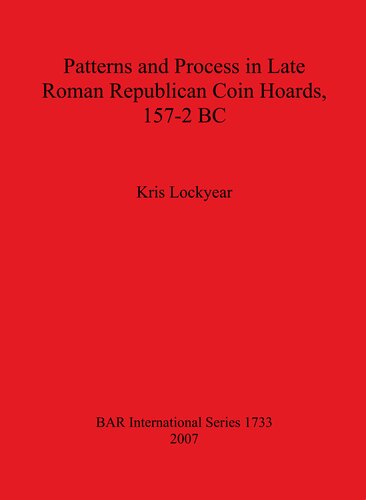

Most ebook files are in PDF format, so you can easily read them using various software such as Foxit Reader or directly on the Google Chrome browser.
Some ebook files are released by publishers in other formats such as .awz, .mobi, .epub, .fb2, etc. You may need to install specific software to read these formats on mobile/PC, such as Calibre.
Please read the tutorial at this link: https://ebookbell.com/faq
We offer FREE conversion to the popular formats you request; however, this may take some time. Therefore, right after payment, please email us, and we will try to provide the service as quickly as possible.
For some exceptional file formats or broken links (if any), please refrain from opening any disputes. Instead, email us first, and we will try to assist within a maximum of 6 hours.
EbookBell Team

0.0
0 reviewsIn this study of Late Roman Republican coin hoards (157–2 BC), the author, rather than taking a specific testable hypothesis such as 'hoards from Spain have more coins of type A than hoards in Italy', prefers to tackle the question: 'what patterning is there in the hoard data?' Just as there are schools of archaeological thought there are schools of statistical thought. It is not uncommon for statistics to be viewed as a way of testing a quite specific hypothesis which is accepted or rejected on the basis of the results. An alternative approach is to view statistics as a method for exploring data. With the development of computers, the application of more complex multivariate tools has grown, but the aim of 'exploring' the data is similar. The methods chosen by the author in this study are mainly Correspondence Analysis and Cluster Analysis; these were selected as those most likely to answer his initial question. What those patterns mean take us from the realm of statistics into the realm of numismatic and archaeological interpretation. Archaeologically and historically, the principal aim is to examine the reasons for the differences between hoards such as the pattern of supply of coinage, or differences in the use of coinage.